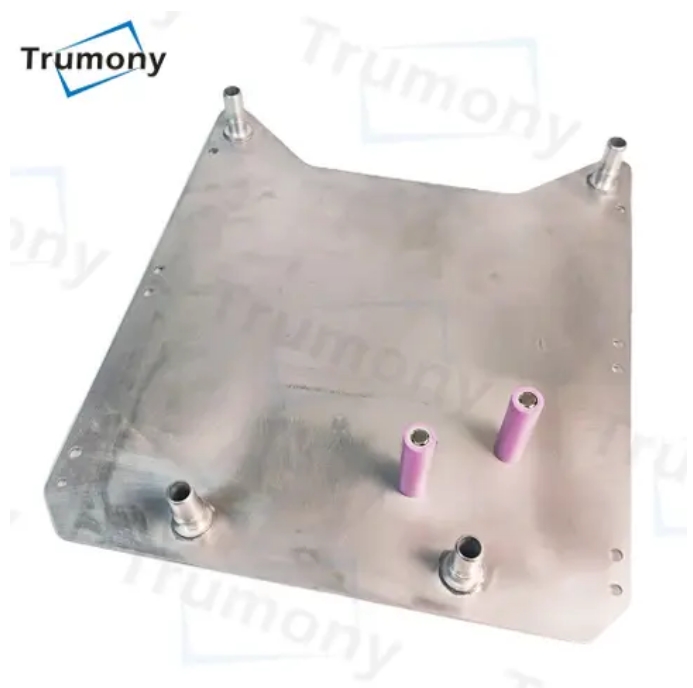The relationship between the heat dissipation efficiency and power of the liquid cooling plate is closely interconnected. Generally, higher power results in more heat generation, requiring the liquid cooling plate to have higher heat dissipation efficiency to maintain the equipment’s normal operating temperature. The specific relationship is as follows:
Positive Correlation
1. Higher Power Demands Greater Heat Dissipation Efficiency
2. As electronic components operate at higher power levels, they generate significantly more heat. The liquid cooling plate must correspondingly increase its heat dissipation capacity to prevent overheating. For example, high-performance computing processors with power ratings above 300W require advanced liquid cooling solutions to maintain safe operating temperatures. Without adequate cooling, components would quickly exceed their thermal limits, leading to potential damage or failure.
3. Improved Heat Dissipation Enables Higher Power Output
4. When a liquid cooling system efficiently removes heat, electronic components can operate at higher power levels without thermal throttling. This principle is particularly evident in overclocking scenarios, where enhanced cooling allows processors and GPUs to sustain elevated clock speeds. For instance, high-end graphics cards using liquid cooling often achieve 15-20% higher performance compared to air-cooled counterparts, as the improved thermal management enables stable operation at increased power.
Mutual Constraints
1. Power Increase Imposes Higher Cooling Requirements
2. There is a practical limit to how much power a system can handle before cooling becomes insufficient. If the liquid cooling plate cannot dissipate heat fast enough, components will experience thermal throttling—reducing performance to prevent overheating. A common example is laptop CPUs, which may drop from 4.5GHz to 2.8GHz under sustained high loads due to inadequate cooling. In extreme cases, prolonged overheating can shorten component lifespan or cause permanent damage.
3. Cooling Efficiency Has Limits Based on Power
4. Even the most advanced liquid cooling plates have physical limitations in heat dissipation capacity. Factors such as coolant flow rate, cold plate material, and heat exchanger design determine the maximum cooling performance. For example, a standard liquid cooling plate might effectively dissipate up to 500W, but beyond that, additional cooling methods (such as phase-change or immersion cooling) become necessary. This means that while better cooling can support higher power, there is always an upper bound where further power increases require entirely different thermal solutions.
Conclusion
The relationship between liquid cooling plate efficiency and power is both complementary and restrictive. Higher power necessitates better cooling, and improved cooling enables higher power—but only up to a point. Beyond certain thresholds, cooling systems face diminishing returns, requiring alternative approaches to thermal management. Therefore, designing an optimal liquid cooling solution involves carefully balancing power requirements with cooling capabilities to ensure stable, efficient, and long-lasting operation.

